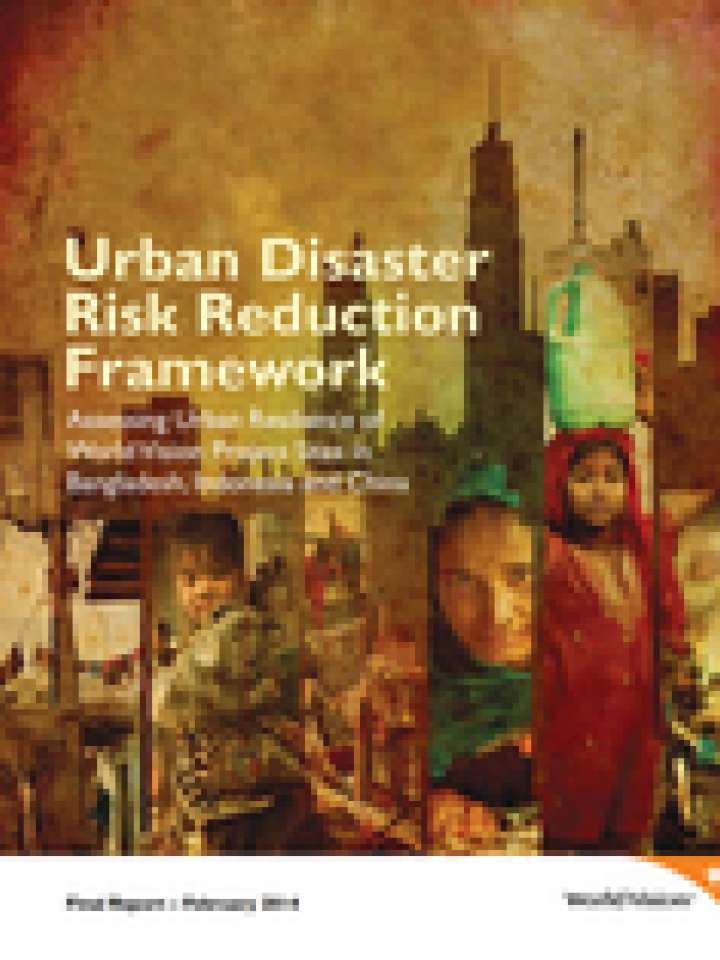Urban Disaster Risk Reduction Framework: assessing urban resilience in World Vision project sites in Bangladesh, Indonesia and China
This document reports on the outcomes of the assessment framework for urban resilience implementation in World Vision project sites in Bangladesh, Indonesia and China. The framework offers a systematic and pragmatic approach to assessing urban resilience. It enables practitioners and development partners to measure and document their priorities, abilities and strengths. This enables fruitful conversations that lead to better understanding of common areas that need focus and attention. In addition, the process itself gives value because as participants go through it, fresh insights and light dawns on an otherwise complex and convoluted route to urban programming
The assessment framework used in this study presents an integrated approach in assessing urban resilience. It combines four existing frameworks or tools and methodologies. The Hyogo Framework for Action (HFA) was used to understand the National Office’s disaster risk reduction priorities. To understand disaster resilience at the city or sub-city level, the Climate and Disaster Resilience Index (CDRI) was used to link resilience to different city services. To assess community resilience, the Action-oriented Resilience Assessment (AoRA) and the School Disaster Resilience Assessment (SDRA) were used. The AoRA aims to understand the collective voices of the community; while the SDRA was utilized to assess school resilience and its linkages with the community. The CDRI, AoRA, and SDRA are connected to five dimensions of resilience analysis, namely, physical, social, economic, institutional, and natural.
Explore further
